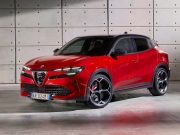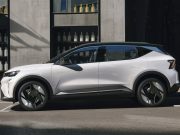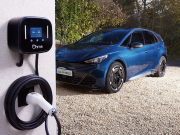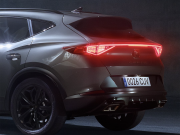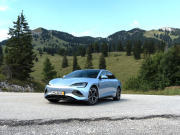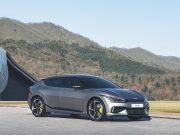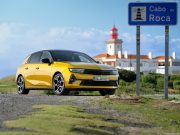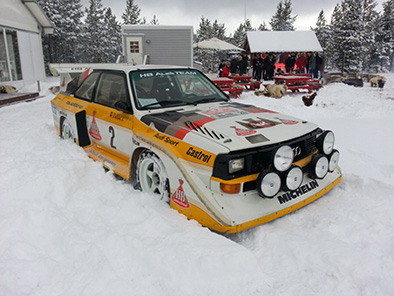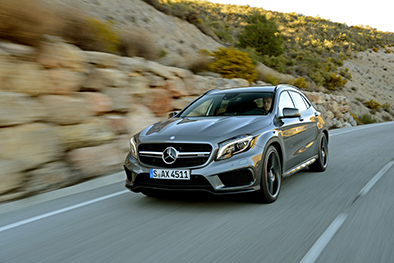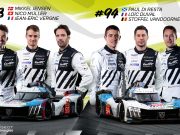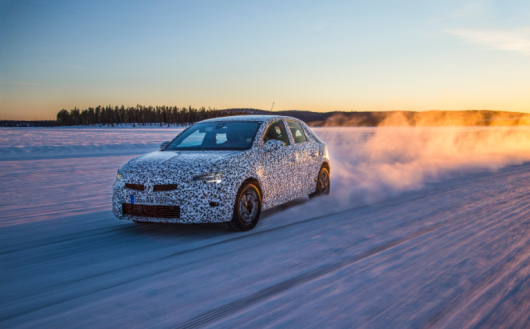
The sixth-generation Opel Corsa is getting ready for its launch this autumn. While the new model has been created with the help of the newest, fastest and most efficient virtual development methods, Opel engineers now take it out to test, refine and validate it in real-life conditions. Since January, chassis, powertrain, electronics, lighting and other Opel engineering experts have been using the long polar winter in Swedish Lapland for intensive testing in ultra-low temperatures on frozen lakes and snow-covered roads. Elsewhere, pre-production cars are currently lapping the test tracks at the Dudenhofen Test Centre while laboratory testing such as electro-magnetic compatibility also takes place at the Russelsheim facilities.
“During the development of the next-generation Corsa, we placed special importance on increasing efficiency,” said Thomas Wanke, Global Lead Development Engineer, Vehicle Performance, who is working on a new generation of the Corsa for the fourth time in his career. “The new model is significantly lighter, which lowers fuel consumption and also increases the fun factor. As with the previous generations I worked on, the chassis we are currently refining was developed on all kinds of European roads including the high-speed German autobahn. Our aim is clearly to offer the customer top chassis execution with an optimum balance between safety, comfort and fun.”
Customers can look forward to a very fun and efficient Corsa. Thanks to lightweight engineering, the new generation of the bestseller – more than 13.6 million units sold so far, with five generations since 1982 – is ten per cent lighter than the previous model. The chassis delivers the typical Opel balance of sportiness and comfort, even though the new model is perceptibly more dynamic than its predecessor. Opel will also offer the Corsa for the first time as a battery electric vehicle, right from the start of sales later this year.
Winter testing: High comfort and safety under all conditions
As they have done for decades now, the Opel engineers have been testing the next-generation Corsa for several months in Swedish Lapland, around 40 kilometres south of the Arctic Circle. Among others, experts from the chassis controls department have been setting up the electronically controlled systems for stability, traction and anti-lock braking on low-grip surfaces, at temperatures as low as -30oC. The purpose of these extreme tests: regardless of ice, snow, slush or asphalt, and differing levels of grip on either side of the car, the control systems must always function reliably. As for delivering high levels of safety, comfort and driving dynamics, Opel engineers are refining the calibration of the chassis systems down to the smallest detail: where does “fun-to-drive” stop and stability control begin? At the Arctic Circle, the conditions for such fine tuning are more suitable than anywhere else. The engineers therefore repeatedly lap the specially prepared handling course, oval and surfaces, continuously optimising the control systems.
The testing with heavily camouflaged cars in Lapland began shortly after Christmas on public roads. From January through March, the ice on the frozen lakes was around one metre thick, so that the test cars, snow-ploughs and water sprinkler trucks could drive on them. The long polar nights also enabled extensive testing of the Adaptive IntelliLux LED® technology which, after having premiered in their respective segments with the Astra and Insignia, will also be available for the first time in the Corsa class. The climate and environment in Northern Sweden made it possible to precisely evaluate and optimise the automatic glare-free matrix headlights which continuously adapt to the prevailing traffic situation and surroundings and simply “cut out” approaching traffic and preceding vehicles from the illuminated area. Making this system, which minimises glare while constantly providing drivers with optimum visibility, available in a popular, small car such as the Corsa is another demonstration of the democratisation of technology from Opel.
High-speed testing: Around the banked oval at Dudenhofen Test Centre
During their night-time test drives on the oval, handling circuit and comfort track at the Dudenhofen Test Centre, the Opel engineers also appreciated the high output of the new Corsa’s headlights. The long straights were used to prepare the new generation for driving on the motorway, where Opel sets especially high standards for the steering and suspension.
The speed-dependent steering has been tuned for optimum precision, a progressive build-up of steering force and good feedback. The shock absorbers are designed to react immediately to the slightest ripple in the road surface or change in direction. The pre-production cars used for conducting all these tests also had to meet high standards for lane-changing and stability under braking. The new Corsa must remain controllable even at speeds higher than 140 km/h; brake-oversteer is not allowed. The bodywork is also tested while the car is driving at high speed on the oval – no part is allowed to flutter or vibrate, or cause annoying noises.
Electronic testing: Around the clock in the Rüsselsheim EMC
While development prototypes and pre-production vehicles drive in the far north, in Dudenhofen, others also undergo strenuous testing in Rüsselsheim’s test rigs and laboratories. Electro-magnetic compatibility, (EMC) tests, for instance, ensure there is no susceptibility of the various electronic systems to disturbances. In the past it was only necessary to prevent the crackling on the radio that was caused by the alternator, the ignition, the windscreen wipers or similar systems. Nowadays, the task is much more complex – it includes safety devices such as ESP, numerous assistance systems like matrix headlights, as well as the whole infotainment system.
In a purpose-built chamber at the EMC lab in Rüsselsheim, the Opel team tests the immunity of the car’s electronic systems against electro-magnetic emissions. These can be conducted along cables in the wiring harness or over the air. The test car is exposed to emissions radiated across a wide range of frequencies. The special absorbers on the walls “soak up” the transmitted emissions so that they do not reflect uncontrollably back into the chamber. The engineers thus obtain clean, reliable data. The car receives the green light only when all its systems have demonstrated their immunity against electro-magnetic emissions. The new Corsa has already passed its test; the electronics are optimally protected from disturbances.



